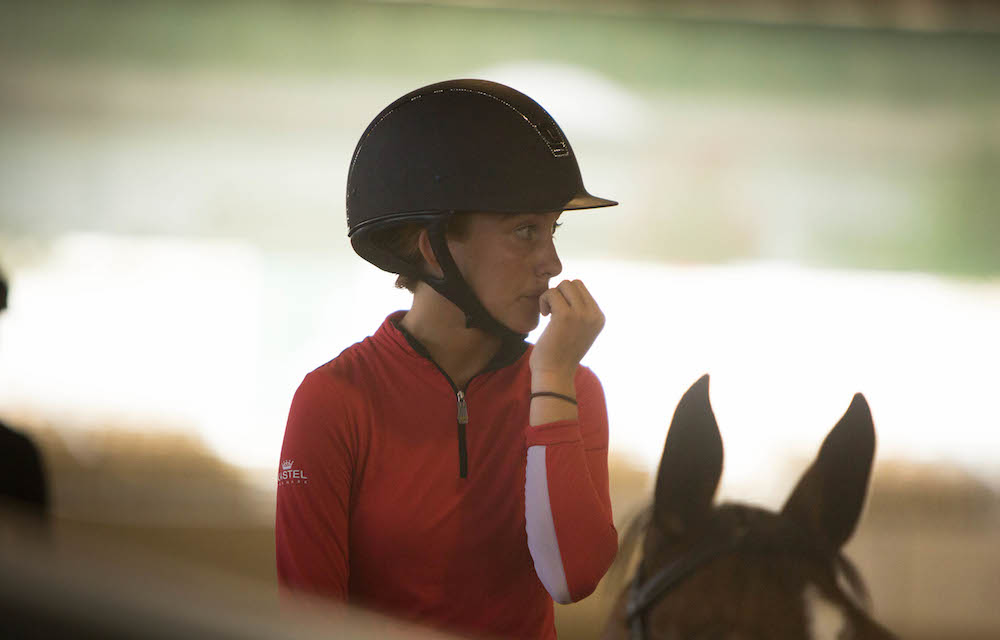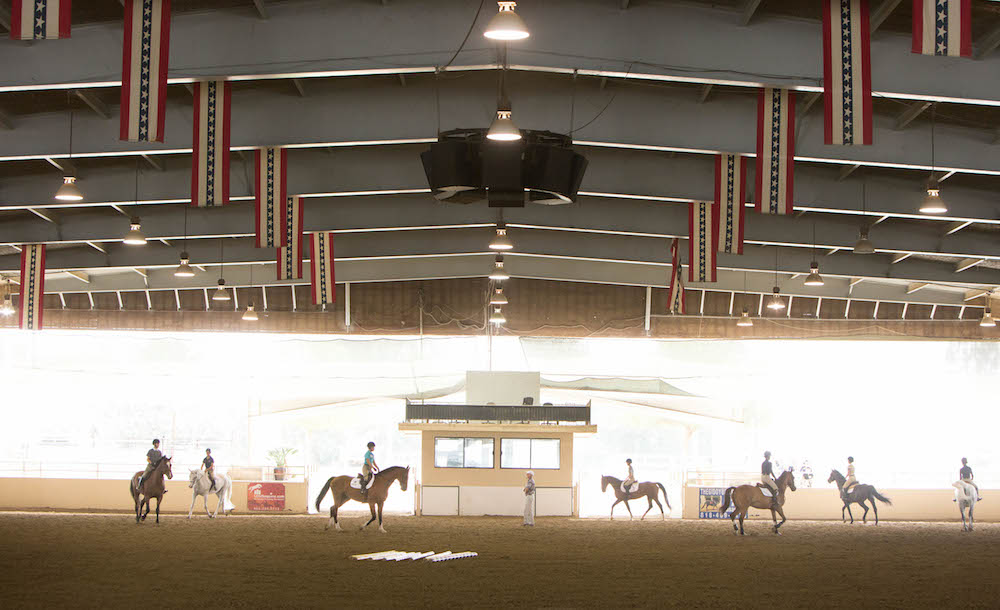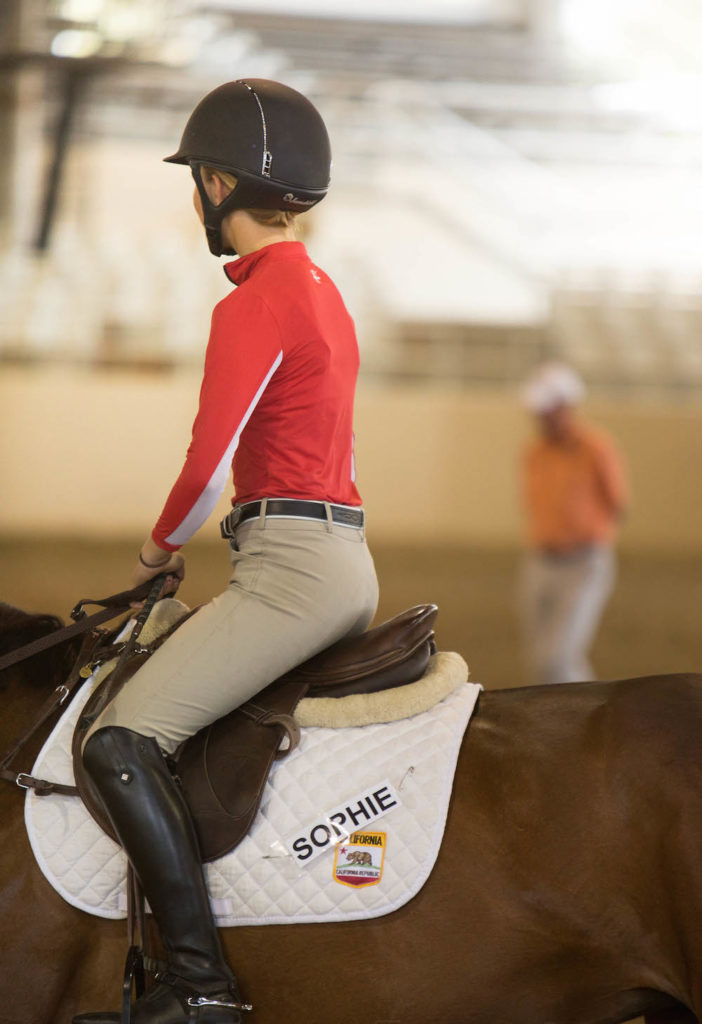In early August, I was selected to participate in the Burbank, CA session of the USHJA Emerging Athletes Program. The five-day program was taught by Olympic Show Jumping Gold Medalist Joe Fargis and the deeply knowledgeable Certified Equine Practitioner Anne Thornbury. During the entire week, the program required participants to be solely responsible for the care and feeding of their equine partner. We were not only instructed in riding technique, but also in proper stable management, basic veterinary care, equine nutrition, feeding and grooming practices, and anatomy.
I was thrilled to be chosen among this year’s talented crop of riders. I knew the program would improve my understanding of equine care and horsemanship, and test me against some of the best competitive riders in my area. Only a few would be selected to move on to the national level of EAP, and with that in mind, we all had to be on our game.
 That’s me, Sophie St. Clair. Feeling a little pensive as the clinic started…
That’s me, Sophie St. Clair. Feeling a little pensive as the clinic started…
In the beginning, I saw the other riders as my competition. After all, at shows they are some of the toughest to beat. But at EAP, I found a very different relationship emerging as everyone worked so diligently toward our common goal. Moreover, as I let go of the competition, I realized that I had something to learn from my fellow riders. The respect I developed for them as horsemen first, before competitors, was more meaningful than any accolade or prize I could win.
If I had to choose a theme for the week it was the idea of “horse first, always.” Both Anne and Joe were consistent in this message and it permeated everything we did.
In the last year, I have been working to stay calm and ride without negative emotion. This work was put to the test when on the first day of riding my mare was ridiculously fresh and spooking like crazy. When you come to an event like the EAP you obviously want to do well, and when something completely out of your control stands in the way it can be frustrating and stressful. During the two-hour flat class, I had to remain calm, hopefully calming my mare. By placing the emphasis on patience and encouragement for my horse first, I was able to push through the difficult moments. This allowed me to find success with the flat exercises.
 Joe goes over proper foot position in the iron.
Joe goes over proper foot position in the iron.
It’s an analogy that transfers over to the horsemanship aspect of EAP. No matter how hot, dirty or physically exhausted we were, everything was focused on caring for our horses first, always. The approach yielded ever increasingly good results through the last day of evaluation over a course.
It was on the last day though that I experienced the most growth. I was required to walk the course alone, come up with my own strategy, watch a couple of rounds to and give myself enough time to tack up and get to the warm up ring. I had to warm up my horse without the aid of my trainer, tell my jump crew how to set my warm up fences and, most of all, be confident that the plan I put together was going to be successful. I had to dig deep and trust that what I had learned from my training would be there for me when I needed it. I relied on myself to know what to do to be successful. This was a huge hurdle in terms of personal confidence in my own ability and understanding. The concept of trusting one’s own abilities illustrates the idea that this group of talented individuals will one day be professionals themselves. And, at some point, we have to take the next step and do it on our own. We have to learn to fly.
The Emerging Athletes Program does exactly this, and I believe it will continue to inspire young athletes on their road to becoming successful professionals. It was an incredible experience, and one that I never could have had without the USHJA’s support for young athletes and horsemen.
In 2009, the United States Hunter Jumper Association launched the Emerging Athletes Program. The EAP, supported by Dover Saddlery since its inception, was developed to encourage and educate young horsemen toward their personal and professional goals. It’s also meant to identify talented upcoming riders that embody exceptional horsemanship skills. With this identification process, the USHJA can develop an emerging talent pipeline that will in part define a talent pool for national and international level competition.



Does this program exist in ohio.
http://www.ushja.org/programs/eap/eap_apply.aspx
Application procedures and locations at this link.